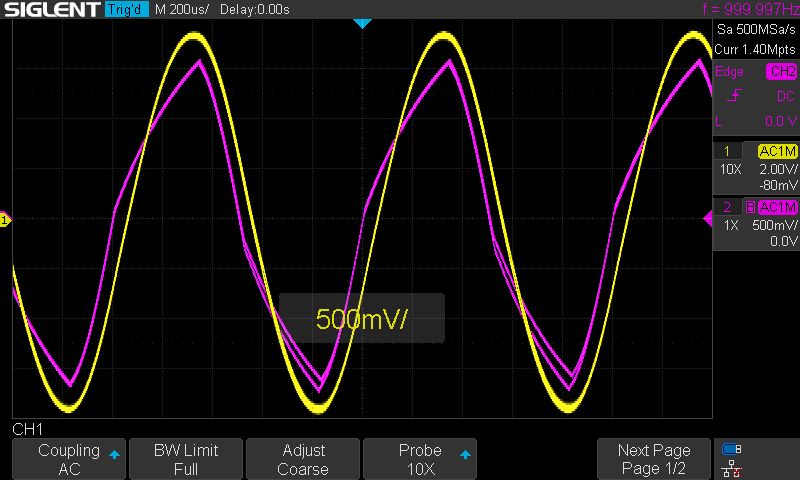Hi All,
I have been cleaning up a Pioneer A5 amplifier (C.1981) by cleaning connections, pots and switches. ESR on the electrolytics was all fine. I adjusted the bias as per the service manual to 0.31V.
I put a 8 ohm, 100W resistive load and and compared the channels under noticed a kind of distortion on one channel, not clipping as such, but distortion of the sine wave.
Can anyone please explain why one channel would show this kind of distortion and where I should look for a fault.
The screen grab shows L&R channels displaying a 1K sine wave.
Many thanks.

I have been cleaning up a Pioneer A5 amplifier (C.1981) by cleaning connections, pots and switches. ESR on the electrolytics was all fine. I adjusted the bias as per the service manual to 0.31V.
I put a 8 ohm, 100W resistive load and and compared the channels under noticed a kind of distortion on one channel, not clipping as such, but distortion of the sine wave.
Can anyone please explain why one channel would show this kind of distortion and where I should look for a fault.
The screen grab shows L&R channels displaying a 1K sine wave.
Many thanks.
Comment